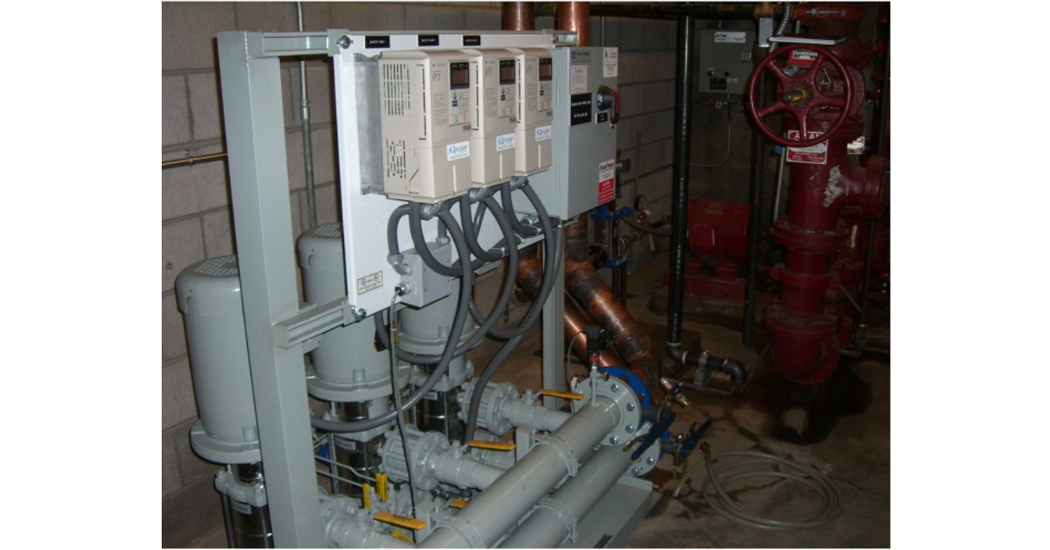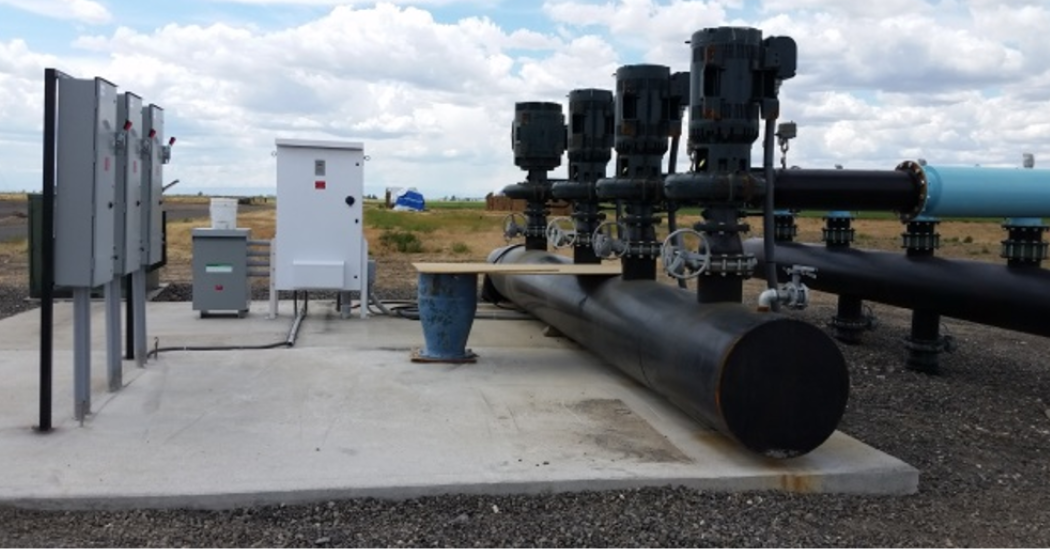VFD’s with Embedded Pump Functions Can Replace PLC’s in Pumping Applications
Advancements in PLC and VFD Technology
Both variable frequency drives (VFDs) and programmable logic controllers (PLCs) have benefited from advances in processor technology and memory capacity. In the case of PLCs, this has led to easier programming, smaller components and the ability to process more complex mathematical and logic applications.
These same advances have also benefited VFDs, providing better motor control, simplified user interface and the ability to perform more complex applications. The capability of VFDs with embedded pump specific applications are now replacing PLCs in pumping applications with numerous advantages to end users.
Challenges with PLCs
The main problem with the PLC option is the proprietary nature of the programming of the PLC. Unless the end user has a ladder logic programmer on staff the creation of the source code that runs the PLC is written by an outside company or independent contractor.
This necessity ties the end user to the programmer for the initial programming and any subsequent revisions, additions, or troubleshooting comes at additional cost. Programmers may not want to release the source code as it represents trade secrets used and owned by the programmer.
So while there are advantages to PLC’s, such as scalability both in functions and I/O and the ability to perform complex logic and mathematical functions there are some significant disadvantages:
- Source code is proprietary to the programmer.
- The end user is required to write a detailed specification used by the programmer to develop the requested PLC functions.
- Any changes that may have been omitted in the specification require change orders at cost to the end users.
- The end user has limited ability to troubleshoot problems that may exist in the PLC code.
- End users do not always get functional documentation on PLC operations.
- Programmers can and have gone out of business leaving the end users without the ability to change or inspect the code.
VFD with Embedded Pump Functions
While VFD’s may not replace PLC’s for certain complex pumping applications, it is possible to use VFD’s to replace the PLC in most simple pumping applications and even some more complex applications, such as pump multiplexing.
Even when using a PLC, the addition of a properly programmed pumping VFD can reduce the I/O required on the PLC, reducing both hardware and programming cost.
 Just a few of the advantages of VFD’s with embedded pump functions are:
Just a few of the advantages of VFD’s with embedded pump functions are:
- Standard programming functions listed by the VFD manufacturer in readily available documentation
- Access to VFD programming is available to the end user.
- VFD manufacturers provide training classes on programming to end users staff.
- End users have the ability to make programming changes as needed.
- Technical assistance for end users is available from VFD manufactures in a variety of forms, such as knowledgeable sales people, authorized service providers, and telephone technical support. Costs vary by manufactures and some provide technical support at no charge.

Examples of building booster station with three VFDs communicating serially for multiplexing without a PLC
So what types of operations can a VFD with embedded pump functions perform?
- Line fill or pre-charge function to fill empty lines at a reduced speed to prevent water hammer when line filling is complete.
- Automated PI functions that include constant pressure, level, or flow regulation.
- Multiple sensor inputs to allow an automated response to system changes, such as suction control for constant pressure systems.
- Multiplexing pumps to allow for wide variations in demand while maintaining efficiency.
- Loss of pump prime detection.
- High and low feedback detection with action, fault or alarm.
- No flow detection, or sleep, with auto restart on demand.
- Auxiliary control for lube pumps, tank level, or low city pressure in booster applications.
- Flow control or limiting and accumulations.
- Multiple set points.
- And many more functions that vary by manufacturer.

Two-pump system with one on the VFD and one running across the line controlled by the VFD
Multiplexing Multiple Pumps
One of the most complex applications that had been the exclusive application of the PLC in past years is multiplexing multiple pumps and bringing them on and off as demand changes.

150 HP vertical turbines multiplexed with one running on VFD and three running across the line.
This is preferred to sizing the pump on expected maximum demand, which can result in running the pump to the left of the performance curve, a condition that can accelerate pump wear as well as result in a loss of wire to water efficiency. In some cases end users have oversized a pump in anticipation of future demand resulting in running the pump in an inefficient mode for extended periods of time. If that increase does not materialize, the result isa waste of the capital investment. A more elegant option is to multiplex multiple pumps together that discharge into a common manifold.
Using a VFD capable of multiplexing allows the end user to purchase pumps that match current demand and add additional pumps at a later date if the demand requires additional flow. All that would be required is the common manifold to plumb in the additional pumps.

Four-pumps multiplexed on one VFD running one pump with the other three running across the line.
Such a technique has been successfully applied to agricultural and building booster stations for over a decade. These systems vary in size from multiple 10 HP pumps on building booster applications to multiple 500HP lift stations supplying large pivot farms. Currently there are hundreds of these systems operating in the United States.
Even if the maximum demand is known and if the actual need at any one point is variable, the maximum demand can be divided up with multiple pumps to better match their performance curves.
Any form of multiplexing gives the user multiple options and losing one pump does not bring the entire system down.
If any pump fails, there are others still running. Even if the VFD fails, the remaining pumps can run in bypass. Getting a replacement VFD quickly is a better prospect than getting a replacement PLC programmed on short notice.
Conclusion
VFD’s may not replace PLC’s in all applications, however, VFD’s are now capable of replacing many to the advantage of the end user in the form of reduced procurement cost, control of set up, available technical support, training of staff, and overall standardization. VFD manufacturers are constantly working to increase features so the future will belong to more VFD‘s with embedded pump specific firmware.
Learn more about VFD’s from Yaskawa.





Comments